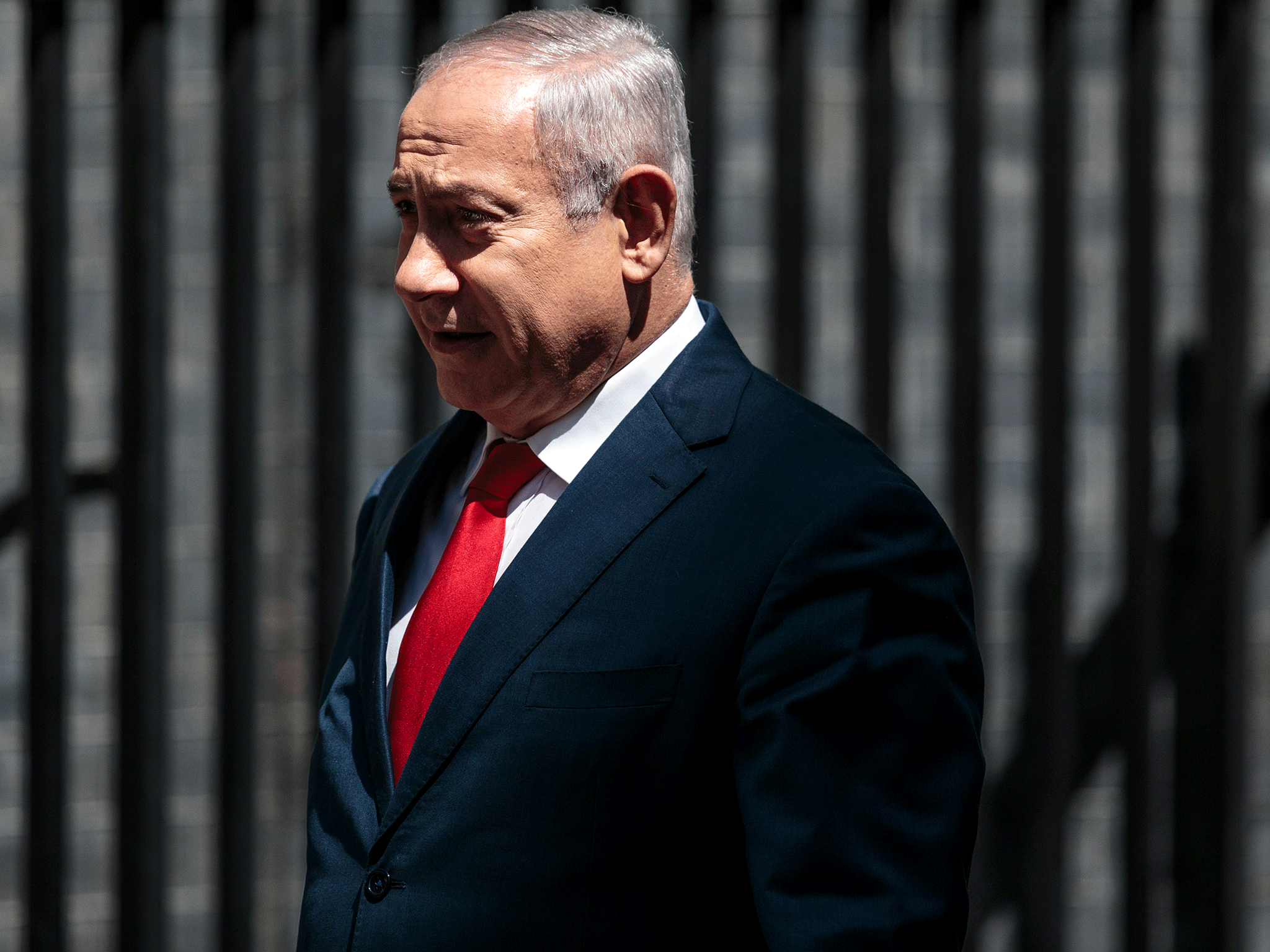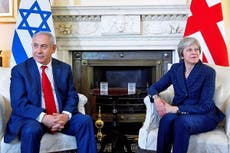I asked Netanyahu's online guru why the PM made his football video about Iran – this is what he told me
Although the four videos directed at Iran this year are only a section of Netanyahu’s overall output, Keyes told me that they attracted the biggest audiences worldwide, with the previous one on water shortages reaching a total of over 6 million

Compared with the bizarre travelogue-style movie of a supposedly gorgeous North Korea landscape interspersed with images of war that Donald Trump showed on his Singapore visit to meet Kim Jong-un, today’s production from Studio Netanyahu could hardly have been cheaper to make: just the Israeli prime minister and a football. But politically it was also way more sophisticated.
Within hours of giving lunch in Jerusalem to Prince William, and more to the point within hours of Iranian goalkeeper Alireza Beiranvand’s spectacular save of a Cristiano Ronaldo penalty, Netanyahu was in his book-lined office explaining to a single camera – with Farsi subtitles of course – how the Iranian World Cup team had performed the “impossible” by stopping the Portuguese penalty king. They had, apparently, shown the same “courage” as those protesting on the streets of Tehran.
The few illustrative moving images in his videos, pumped out on not only Twitter but his Facebook account and platforms like Telegram, are simple but weirdly memorable. When Hamas produced a 2016 document seeking to moderate its original frankly antisemitic charter, Netanyahu anchored his denunciatory video by ripping it up and throwing it into a bin. He began his last Iran-targeted video, disparaging the regime for the drought faced by its people, by simply pouring himself a glass of water. And today it was a (notably short) Kevin Keegan-style prime ministerial demonstration of ball control.
The credit for Netanyahu’s ever-expanding use of social media, bypassing the mainstream press and the TV networks, as well as his relatively new technique of extending friendship to the Iranian people rather than merely denouncing the regime – goes mainly to an Israeli American called David Keyes. Keyes, a social media expert as well as a commentator in his own right, is officially the foreign media spokesman in the prime minister’s office, and, in the words of The New York Times, “a pioneer in online activism”.
In the fringes of the UN general assembly in 2013, Keyes famously confronted the Iranian foreign minister Javad Zarif, asking how he felt about using Facebook when it was otherwise forbidden to Iranians. He followed this up with a question about when Majid Tavakoli, one of Iran’s leading student activists, would be freed from jail. When Zarif claimed not to know who he was talking about, his Facebook account was flooded by Iranians complaining about his ignorance, whether feigned or not. Hours later, Tavaokoli was released on parole.
Although the four videos directed at Iran this year are only a section of Netanyahu’s overall output, Keyes told me that they attracted the biggest audiences worldwide, with the previous one on water shortages reaching a total of over 6 million. And while they were undoubtedly lapped up by Netanyahu supporters in Israel and the US, Keyes said that 100,000 people had joined Israel’s Farsi channel within 24 hours to pick up tips on water conservation.
“Prime Minister Netanyahu is the only world leader speaking to the Iranian people like this,” Keyes added. Ninety-three per cent of 346,000 users of another Iranian Telegram channel, he claimed, had now voted in favour of Netanyahu’s latest video. The certainly frequent denunciations of these videos by Iranian ministers, he said, suggested they were hitting home.
A leading Israeli Iran analyst, Meir Javedanfar, told me that he did not think Netanyahu’s messages would make much difference either way to the Iranian protests or to the handling of them by the regime. While Tehran might accuse dissidents of being “Zionist agents”, it was “smart enough” to know that direly worsening economic conditions lay behind the protests. Instead, Netanyahu was looking to the “day after” a fall of the regime, when he could show he had sought to befriend the Iranian people. And the switch from this approach to one of merely attacking the regime’s hegemonic ambitions which had “pissed off a lot of people” was “a good thing”.
Israeli euphoria about the protests may be premature. As Haaretz’s astute regional commentator Zvir Barel wrote, rather than the region collapsing, Ayatollah Khamenei could seek to replace Iran’s president Hassan Rouhani with a harder-line figure: “When in the West they’re talking about the chances of bringing down the regime, in Iran they’re talking about replacing the leadership in order to preserve the regime.”
Nor is Netanyahu acting only out of simple altruistic sympathy for the Iranian people – a sympathy he shows no sign of extending to the millions of Palestinians who live under Israeli occupation without civil or political rights. Indeed his relentless focus on Iran helps to reinforce his attempts, evident in most of his talks with other world leaders, to downgrade the Palestinian issue – the one he actually has the power to remedy – to the status of a minor irritant. Not to mention providing a welcome distraction from the ongoing threat of prosecution over the corruption allegations against him.
But while Donald Trump’s use of Twitter continues to provoke acres of commentary on his adeptness in reaching his base and making news, it’s arguably Netanyahu who is really out in front as the master user of social media among heads of government. Maybe the chronically beleaguered Theresa May should have a look at how it’s done.






Join our commenting forum
Join thought-provoking conversations, follow other Independent readers and see their replies